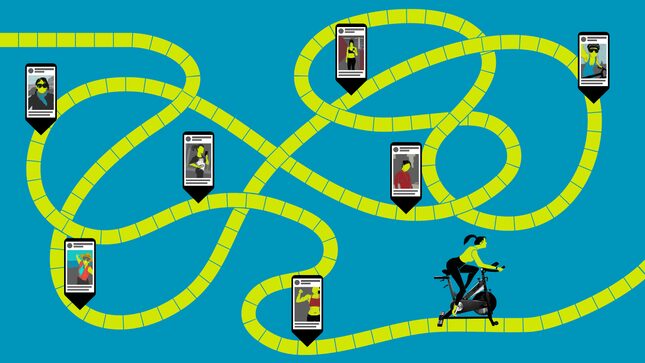The Never-Ending Fitness Journey
Latest
Image: Jim Cooke
In the first gloomy weeks of 2020, paparazzi photos of Adele made the tabloid rounds. One of the grainy shots shows a joyful woman, frolicking on the beaches of Anguilla with famous friend Harry Styles. In the pictures, Adele looks happy, and she also looks thin—too thin, some fans speculated, voicing the sort of faux-concern commonly reserved for weight loss. Adele reportedly lost over 100 pounds, which is notable, but more so is the way the media approached her body as if it had nothing really to do with how she looked and everything to do with her internal mental state. “It was never about losing weight,” an “insider” told People in January. “Her weight loss happened because she has cut down drinking and is eating more real food. But she now loves her physical transformation too. She is more confident, dresses differently and she just seems happier overall.” There is no indication that Adele’s transformation is temporary: We are now in thrall to the first leg of a fitness journey—the implication of the journey is that it is an epic but never-ending odyssey.
The “fitness journey” is now everywhere, from blog posts to YouTube, where earnest, 35-minute long, monetized videos abound. On social media, the fitness journey is rarely the purview of men. Instead, it is a deliberate repackaging of weight loss, adding an emotional element. To carve out a new body from the one that previously served you is good for the physical but also for the mental. You will be fine, of course, if you live in the body you currently inhabit, but wouldn’t it be fun to discover whether or not an ab or two will emerge from your tender midsection?
Though working out releases endorphins, which makes the body feel good and also temporarily alleviates any mental stressors, this fact is remarkably absent from the contemporary notion of the fitness journey, which implies that getting in shape isn’t explicitly about mental or physical health but, more broadly, about wellness. A fitness journey is a spiritual undertaking, but one that requires external and internal motivation. In order to fully succeed on this endless journey of transformation, your motivations and intentions must be pure. Starting a fitness journey for weight loss only is not enough to sustain the journey; there must be a stronger, internal motivation that pushes you towards this path. The prevailing narrative of the fitness journey is that you will ultimately fail if the only motivation for getting in shape is to look hot.
The 2019 movie Brittany Runs a Marathon picks at the darker side of the fitness journey. In the movie, Brittany (Jillian Bell) is a caustic, guarded woman uncomfortable in her own body and deeply unconvinced of her own worthiness for love. After a doctor sternly informs her that her BMI places her in the “obese” category, Brittany takes up running. One block becomes three, which inevitably becomes a mile. Watching the movie for fitness motivation is useful. If you are resistant to the idea of “goals” or “motivation” in any way, then Brittany’s path to success feels manageable.
-

-

-

-

-

-

-

-

-

-

-

-

-

-

-

-

-

-

-

-

-

-

-

-

-

-

-

-

-

-

-

-

-

-

-

-

-

-

-

-








































